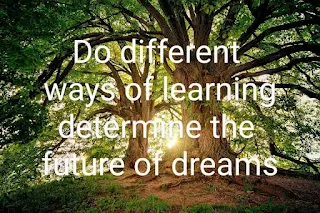Many individuals often overlook the significance of strategic planning, particularly as they embark on new ventures. However, understanding this concept can be the key to turning your aspirations into reality. Imagine you have a dream of opening a bakery. To make this dream come true, you need to engage in strategic planning. This involves outlining the steps you'll need to take, analyzing the market, and determining the resources you require. Essentially, strategic planning helps you map out how to achieve your goals efficiently and effectively.
To put it simply, strategic planning is similar to a navigation system for your journey towards achieving your goals. It outlines the route you need to take and what tools you'll need along the way. It is crucial to grasp its importance before you dive into any project because it sets the foundation for everything that follows.
The Essence of Strategy
The term "strategy" often conjures images of military tactics or sports game plans, but it has a broader application in various fields, including education and business. According to its definition, strategy can be likened to the approach one takes when facing challenges—just like a general devising a plan to outsmart the enemy.
In the context of education, strategic planning plays a vital role in determining how teachers approach their objectives. A well-thought-out teaching strategy can be defined as a method that encompasses various teaching techniques and tactics aimed at establishing a meaningful connection with students. As educator Broudy explains, "Teaching strategy seeks to establish relationships and explore a broader scope of different teaching methods, techniques, and tactics."
Why Strategic Planning Matters
When it comes to achieving personal or organizational goals, strategic planning is indispensable. Here’s why:
1. Resource Allocation Strategic planning ensures that both human and physical resources are used efficiently. A teacher who understands the capabilities of their students can tailor their lessons to optimize learning. For instance, if a class shows a keen interest in learning through technology, a teacher might integrate digital tools into their teaching strategies.
2. Anticipating Change: The world is constantly evolving, particularly with technological advancements. Some individuals believe the present situation must be evaluated carefully to adapt future strategies, while others prefer a more organic approach to development, allowing strategies to evolve naturally. However, for lasting success, it’s essential to remain vigilant about potential changes and prepare for them in advance.
3. Goal Orientation: A clear strategy outlines the objectives you wish to achieve, serving as a guide for all team members. Each member must understand their role in moving the organization forward. In a classroom setting, this means that every lesson should contribute to the overall educational goals.
Key Characteristics of Teaching Strategies
Modern educators are tasked with equipping students with the skills necessary to thrive in an increasingly technological world. Understanding the characteristics of teaching strategies can help educators adapt their approaches effectively:
1. Teacher Competence The effectiveness of any teaching strategy hinges on the teacher’s qualifications and ability to assess their students. For example, an enthusiastic and knowledgeable teacher can inspire creativity and engagement, making learning more enjoyable for students.
2. Adaptability Strategic planning must consider the educational environment. As circumstances change, the strategies employed should be modified accordingly. For example, if a new educational technology is introduced, teachers should integrate it into their existing strategies.
3. Inspiration and Engagement Successful strategies inspire students, sparking their interest and encouraging participation. This can be achieved by incorporating interactive lessons or hands-on activities.
4. Diverse Approaches: Organizations must accommodate various interests and backgrounds. A teacher might incorporate group projects that allow students to form diverse teams, exposing them to different perspectives and ideas.
5. Dynamic Nature: Finally, as students’ learning styles and useful technologies evolve, teaching strategies must also adapt. This could mean incorporating social media for collaborative projects or utilizing online resources for research.
Types of Teaching Strategies
Educators typically develop strategies tailored to their subject matter. Let’s explore a few examples:
- Cooperative Learning: In this approach, students work together in groups to solve problems or complete tasks. For instance, in a science class, students could collaborate on a group experiment, learning teamwork and scientific principles simultaneously.
- Project-Based Learning This strategy involves students engaging with real-world issues through projects. For example, students might tackle an environmental problem by developing a community garden, thus learning both project management and sustainability practices.
- Flipped Classroom : In a flipped classroom, traditional teaching methods are reversed. Students learn new content at home—often through online lectures—and then practice applying it in class. This allows teachers to provide more personalized support during class time.
- Differentiated Instruction: This method involves tailoring lessons to meet individual student needs. For example, a teacher might provide advanced math problems to faster learners while offering additional support to students who require it.
Conclusion
In conclusion, the importance of strategic planning cannot be overstated. Whether in education, business, or personal growth, setting a clear direction is essential for success. With effective strategies, you can navigate the complexities of achieving your goals, adapting to changes along the way, and creating an environment where everyone can thrive.
As you embark on any new endeavor—be it launching a business or developing a lesson plan—remember that strategic planning is your trusted map. With it, you can transform your dreams into tangible achievements, paving the way for a successful future. Embrace the power of planning, and watch as your aspirations come to life!



If you want to clear your doubts regarding anything, please let me know